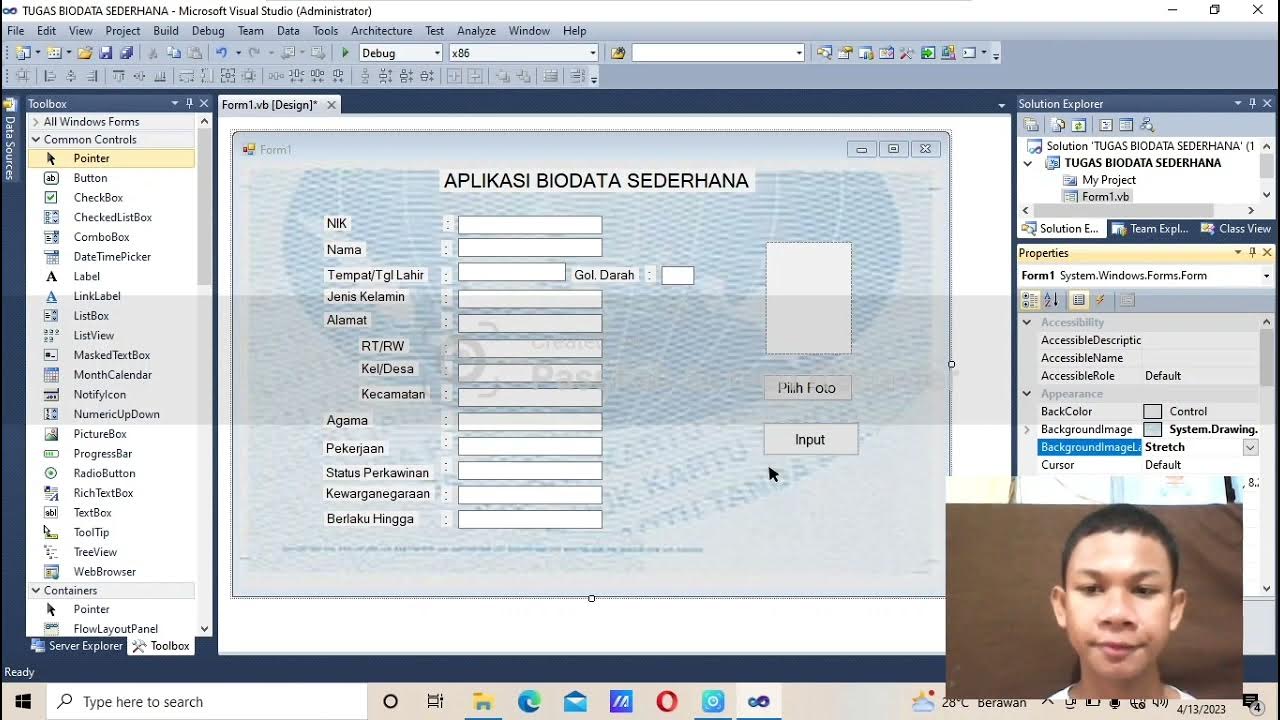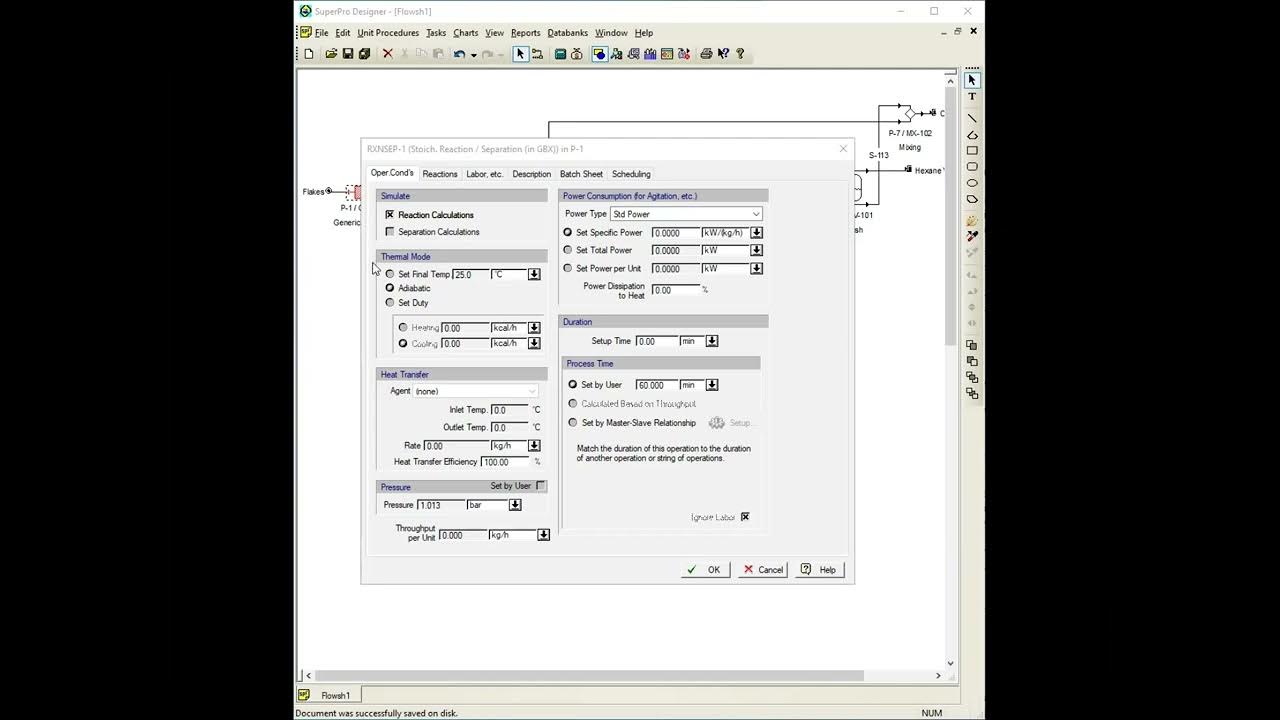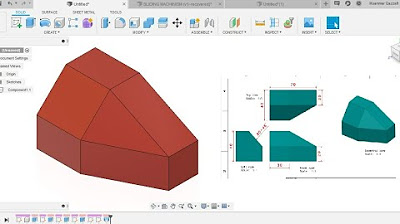Band Stop Filter Using HFSS Software
Summary
TLDRIn this tutorial, the process of designing a 2.4 GHz bandstop filter using HFSS software is demonstrated. The video walks through each step, including setting up the FR4 substrate with specific dimensions, designing the ground plane, and creating the bandstop filter pattern using a microstrip line. The procedure also includes defining ports for signal input and output, running simulations to analyze the filter's performance, and reviewing the resulting frequency response and insertion loss curves. The tutorial provides an insightful guide for anyone looking to design and simulate a bandstop filter using HFSS software.
Takeaways
- 😀 The tutorial focuses on designing a bandstop filter with an operating frequency of 2.4 GHz using HFS software.
- 😀 The substrate material used is FR4 with a dielectric constant of 4.4, and its height is set to 1.6 mm.
- 😀 The dimensions of the substrate are set to 38 mm in length, 20 mm in width, and 1.6 mm in height.
- 😀 The ground plane is created with the same dimensions as the substrate, with the Z position set to -1.6 mm.
- 😀 A rectangular sheet is used to design the filter, with dimensions of 15 mm x 3.06 mm.
- 😀 Ports are created on the design, and their positions are adjusted accordingly for the filter's operation.
- 😀 The simulation is set at an operating frequency of 2.4 GHz with a maximum data value of 0.02.
- 😀 The design is validated in the software, ensuring the components are correctly placed and functioning.
- 😀 An open region radiation body is created to handle radiation during the simulation.
- 😀 After simulation, the results are analyzed, including insertion loss and the frequency response curve for the filter.
- 😀 The tutorial emphasizes the importance of each step, from substrate setup to simulation and result analysis, in designing an effective bandstop filter.
Q & A
What is the primary objective of the tutorial?
-The primary objective of the tutorial is to guide viewers through the process of designing a bandstop filter at 2.4 GHz using HFSS software.
What is the significance of the 2.4 GHz frequency in this design?
-The 2.4 GHz frequency is commonly used in wireless communication, such as Wi-Fi and Bluetooth, making it an ideal choice for designing a bandstop filter to block specific frequencies in this range.
What material is used for the substrate in this design, and why?
-The substrate used is FR4 epoxy, which is a common material for PCB design due to its cost-effectiveness, availability, and good dielectric properties, with a relative permittivity of 4.4.
How are the dimensions of the substrate defined in the design?
-The substrate's dimensions are defined as 38 mm in length, 20 mm in width, and 1.6 mm in height. The Z-position is set to -1.6 mm to position it below the ground plane.
Why is the ground plane necessary in this design?
-The ground plane is essential in this design as it provides a reference plane for the microstrip and helps to create a consistent electromagnetic field distribution, improving the filter's performance.
What is the role of the microstrip pattern in the design?
-The microstrip pattern is the part of the filter that controls the signal flow. It is designed to have a specific length and width to achieve the desired filtering characteristics at 2.4 GHz.
How is the microstrip pattern modified in this tutorial?
-The microstrip pattern is created as a rectangular sheet, and a smaller rectangle (1 mm x 2 mm) is subtracted from it to form the desired shape for the filter.
How are the ports configured in the design?
-Two ports are configured in the design. Port 1 is placed at one end of the microstrip, and Port 2 is placed at the other end. The dimensions and positions of the ports are carefully defined to ensure proper signal input and output.
What steps are involved in setting up the simulation for this design?
-The simulation is set up by specifying the operating frequency of 2.4 GHz, selecting the solver type as 'Passband,' and creating an open region for the simulation to calculate the response of the filter.
How are the results from the simulation analyzed?
-The results from the simulation are analyzed by observing the phase response (S21) and insertion loss curve (S21). These curves show the filter's performance, including its ability to block certain frequencies and allow others to pass.
What do the red and green curves in the simulation results represent?
-In the simulation results, the red curve represents the actual performance of the filter, while the green curve shows the theoretical response or expected behavior of the filter.
What is the importance of validating the design before running the simulation?
-Validating the design ensures that there are no errors in the configuration, dimensions, or material properties before running the simulation. This step is crucial to avoid incorrect results and ensure the accuracy of the design.
Outlines

Cette section est réservée aux utilisateurs payants. Améliorez votre compte pour accéder à cette section.
Améliorer maintenantMindmap

Cette section est réservée aux utilisateurs payants. Améliorez votre compte pour accéder à cette section.
Améliorer maintenantKeywords

Cette section est réservée aux utilisateurs payants. Améliorez votre compte pour accéder à cette section.
Améliorer maintenantHighlights

Cette section est réservée aux utilisateurs payants. Améliorez votre compte pour accéder à cette section.
Améliorer maintenantTranscripts

Cette section est réservée aux utilisateurs payants. Améliorez votre compte pour accéder à cette section.
Améliorer maintenantVoir Plus de Vidéos Connexes

(Tugas 1 VB. Net) Membuat aplikasi biodata sederhana (KTP) dengan menggunakan visual basic 2010!!

TUTORiAL MEMBUAT PiSTON, BELAJAR BERSAMA - AUTOCAD 2017

Creating a Hello World Application | How-to | Flowable

Contoh Perhitungan Analisa Balok Anak dgn Plastik Sempurna (Leleh Umum) | Struktur Baja | Lightboard

Extraction on SuperPro Designer

Fusion 360 beginner's Exercise #5 - Fusion 360 tutorial
5.0 / 5 (0 votes)
